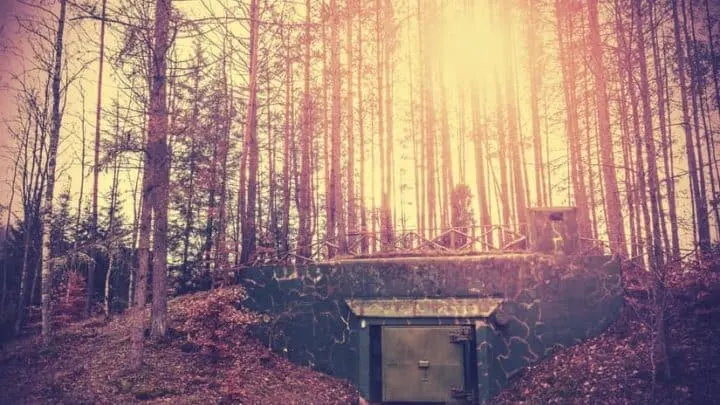SHTFDad may collect a share of sales or other compensation from the links on this page.
You might have considered a number of bunker designs and uses but have you really sat down and considered a full list of underground bunker supplies?
The world is filled with perils beyond number. We prepare for those encountered and envisioned.
Then there are the risks of hiding in the shadows. The stuff of prepper nightmares.
Some preppers reach to the Bible to name them. These are the four horsemen (pestilence, war, famine, and death). Others choose more modern names (EMP, nuclear destruction). Finally, a few look to Mother Nature herself (supervolcanoes, asteroids).
Regardless of how these risks are named, they each bring an existential threat to humanity. Arguably the best protection is to flee underground. Considering an underground bunker requires planning on several fronts.

From design to building to furnishing and finally stocking up, each step down the path requires a lot of thought so that our prepper dollars are spent wisely on our bunker.
You’ve got to start somewhere. If you didn’t, you’d never get prepared. So let’s get going on identifying our underground bunker supplies.
Specifically, we will take a page from wilderness survival and prioritize our shelter or bunker supplies based on these priorities:
#1. Air Filtration

We breathe air every day and rarely is that a risky proposition.
In underground bunkers, you are limited in your ability to escape bad air. If the air goes south you have two choices: leave or filter it. Most will choose an air filtration system for their bunker.
Commercial Air Filters
If you are building an underground bunker you should also consider adding a commercially manufactured Nuclear, Biological, and Chemical, or NBC, air filtration system to your supplies. While air filters are fairly simple devices they do have a few movable parts and consumables that you need to stock up on.
First and foremost you will need to store extra filters. These may include pre-filters, HEPA filters, carbon filters, and any other specific filters your system requires.
Secondly, make sure to stockpile spare parts. These will include extra electrical components (fans, motors, etc.) as well as other critical parts (overpressure valves, blast valves, and pressure gauges).
Finally, make sure to include a manual hand/bicycle crank in the event the electrical components fail.
- Pedal Generator with 120 Volt 20 Watt output
- Folds to small size, easily protable and to set up
- easy to pedal for long periods of time, uses...
DIY Air Filters
If you have opted to implement a DIY NBC filtration system you will still have components to store. As with commercial systems, be sure to stock extra motors, valves, and filters (including filter media).
Prior to installation, you may wish to stress test your filter to determine the points of failure and the life cycle of all the mechanical components. If you don’t have this luxury it may be best to construct one or more ready spares for your bunker.
#2. Power & Heat

Next on the list is energy. This topic traditionally includes your electrical system but also heating systems required to keep your body temperature at a comfortable 98.6°.
Electrical System Components
First your electrical system. Although they have minimal moving parts, electrical components have a mind of their own. Be sure to stock fuses, breakers, outlets, and, not least of all, lightbulbs.
LEDs light bulbs may have a lifespan in the hundreds of hours but I still don’t trust the numbers on the box. Stock several of each type in your bunker. Being underground in the dark will suck.
- GREAT VALUE - 10 year 24 LED bulbs with 800 lumens...
- LONG-LASTING – These bulbs are a great...
- ENERGY-SAVING – These LED light bulbs require...
Power Generation
Moving on to your power system there is a multitude of system components that you will need to store. If you are relying on solar for your energy needs then be sure to spare panels, inverters, charge controllers, cabling, fuses, breakers, and any system sensors.
If you are using a gas, propane, or diesel generator you will need to stock copious amounts of fuel as well as generator parts. Carburetor parts, belts, bushings, bearings, fuel lines, as well as spark plugs should all be on your list.
If money allows, it will be worth it to get a spare generator of the same make, model, and size (two is one after all). If not feasible, at least purchase a smaller spare for emergencies. It will be exceptionally difficult to fix your generator in the dark.
Power Storage
If your system has a battery bank you may choose to stock a few spare batteries in your underground bunker supplies. Do beware as most have a limited shelf life especially when not in use or regularly charged.
Finally, be sure to have a few extra extension cords. Nothing worse than not being able to get power where you need it. It pays to have extra underground bunker supplies like these.
Heat

To keep yourself warm you have several options. First, if you are using an active heating system then you must start with fuel. Lots and lots of fuel.
Secondly, spare parts are a must. Whether you are using solar air heating or a wood stove, look at all the things that can break from fans to flues and top to bottom. If you are in your bunker chances are that the local hardware store is not open for business.
If you are using passive heat then you are depending on radiant heat from the sun or you have stockpiled a bunch of warm clothes and blankets.
We all need several pairs of warm clothes to allow for timely changes. The same rule applies to blankets, bedding, and other warming items.
Have a spare to use while the primary set is being washed. Also, have a few sets to replace worn-out ones.
#3. Water
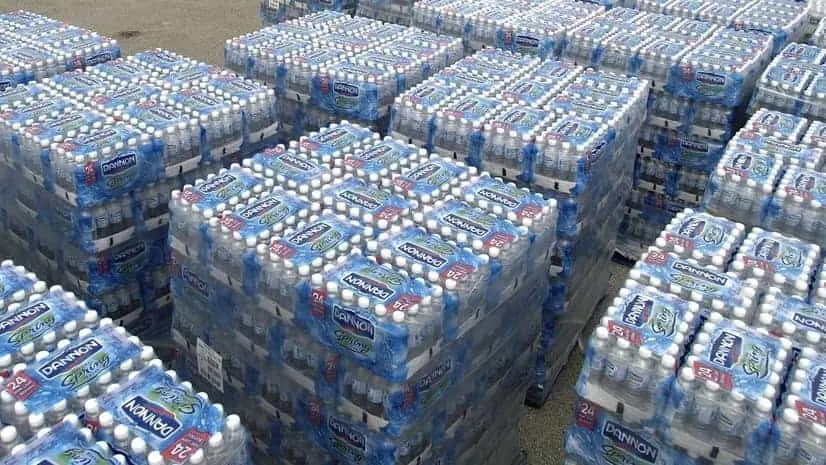
Water Storage
The next slot in our survival shelter supplies list is water. First, let’s consider stored water. This can take the form of a few cases of bottled water, many five-gallon buckets, or a single Intermediate Bulk Container (IBC).
Choose the container size that fits your available space and plan for a minimum of 1 gallon per person per day. However, this is a low estimate and you should plan for more. Much more.
- Great for storing liquids of all kinds, Chemical...
- 2" Ball valve opening, connection type may vary
- Durable One-Way Tote
Water Filters
To augment your water stores I recommend a water filtration system. No matter your precautions, water can grow stuff you’d rather not drink. At a minimum, long-term storage water can develop off-flavors.
A quality water purification system will remove both pathogens and flavors. Stock a few filters for these emergencies.
If you have a Berkey or other larger system then stock a few extra filter elements. Otherwise, add several Sawyer or Platypus filters.
- ENJOY GREAT-TASTING TAP WATER EVERY DAY AT HOME-...
- INDEPENDENT TESTING- Black Berkey Elements (the...
- INCLUDES AUTHENTIC BLACK BERKEY ELEMENTS (THE...
- High-capacity, gravity-fed, hollow-fiber water...
- Meets all EPA/NSF guidelines for removal of...
- No pumping required; reservoir fills easily and...
A second alternative is an ability to disinfect water. Stock water purification pills or powdered chlorine (e.g. Pool Shock).
Be careful with the packaging of this, improper handling can render your bunker unlivable with dangerous levels of chlorine gas.
- High-capacity, gravity-fed, hollow-fiber water...
- Meets all EPA/NSF guidelines for removal of...
- No pumping required; reservoir fills easily and...
Water Well
If your bunker has a water system (a well) then there will be mechanical components. Although stocking a spare pump may not be practical – likewise replacing it may be difficult. If you have the means and ability, then stock an extra!
Otherwise, focus on the other components of the system. Valves, pressure switches, and spare washers for faucets will save you from a run to the non-existent hardware store.
#4. Food

Given normal circumstances, we can live much longer without food than water.
However, that is no reason to skimp on calories in your list of underground bunker supplies. There is a reason that submarines have some of the best food in the Navy.
A high-quality meal can do miraculous things for your mood. While you are in your bunker make sure to break the monotony with good food supplies.
- Package Weight : 1.6 Lbs
- Package Quantity : 1
- Product Type : Safety Supply
- Hash browns, scrambled eggs, crumbled pork patty,…
- Just add water. Plan easier. Travel lighter. Eat…
- Two 1-Cup servings
Non-Perishable Food
The first item in your food stockpile checklist should be non-perishable food, long-term storage food. This will make up the vast majority of your calories.
Freeze Dried Meals
For space savings, I recommend you store the majority of your food as freeze-dried meals. Freeze-dried meals require little more than water and heat to prepare. So adjust your water and fuel stores accordingly.
Compared to rice and beans freeze-dried meals will use considerable fuel and less heat to cook. Likewise, they come in much more variety than is possible with rice and beans.
Make sure to store a significant variety of freeze-dried meals to thwart meal fatigue. There is nothing worse than having no variety in your meals, especially when your daily routine has little variety as well.
Always try out anything you choose to store ahead of time. As there is actually one thing worse than food fatigue. Food fatigue with meals that suck. Buy a few samples and see what you like and dislike.
Individual Freeze-Dried Foods
One of the best foods to stockpile is individual freeze-dried foods. Veggies (corn, broccoli, potatoes, carrots, onions), fruits (peaches, strawberries, blueberries), and meats (chicken, pork, beef) can be used individually or together to add interest to an otherwise plain dish.
Be sure to stack these high and deep with lots of variety. They are cheaper than complete meals and add versatility to your stores.
Bulk Foods
Finally, you should also store bulk items like rice, beans, pasta, and oatmeal. While freeze-dried meals are expensive and bulky they do add variety. Therefore balance your freeze-dried meals with several staples.
One freeze-dried meal can be stretched with a side of rice, beans, or grits. A freeze-dried breakfast can be extended with a side of oatmeal.
Even using freeze-dried components to add interest is a great way to enhance an otherwise boring meal. One of our personal favorites is oatmeal with a dash of powdered milk, to make it creamy, and a few freeze-dried strawberries.
Perishable Food
In the scenario of a bunker, I will consider perishable food supplies in two categories. Those that have a shelf life of only a few years (e.g. canned goods) and those that will spoil rapidly (e.g. fresh veggies).
Canned Goods
Unlike your long-term food storage (freeze-dried, and bulk items) you will have to consider rotating your canned goods. Even if it’s only once every few years it is best not to let them sit for decades in your bunker.
These goods will anchor you in normality. Having pasta with your favorite sauce or a dish of canned peaches will be an oasis in your food desert.
Again stock what you eat and make sure to add variety. Even home-canned goods can last several years and will surpass the quality and flavor of most commercial foods.
Personally, I would never venture underground without my personal stash of canned hot peppers!
Veggies, Herbs, And Sprouts
The second class of perishables is short-term foods. I’m not suggesting you should have a fridge filled with fruits and veggies. I am suggesting you include the ability to grow small portions of herbs, lettuce, microgreens, and sprouts.
Not only are they a great source of nutrients they also greatly increase morale. A fresh salad after weeks of freeze-dried lasagna will warm the soul. Or better yet a few leaves of fresh basil on lasagna.
Be sure to include the proper growing apparatus including lights, nutrients, and soil. Even better, experiment now with hydroponics so that you don’t need soil for a growing medium.
Spices, Herbs, and Other
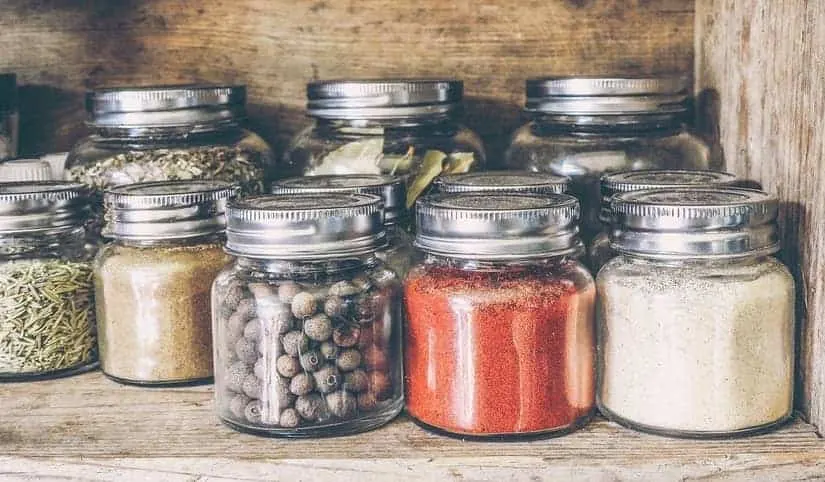
In addition to completing meals and meal components, make sure to round out your food stockpile with several adjunct items.
First and foremost include spices. While not generally packaged for the long term I’d still take old basil and garlic powder over nothing any day.
Whatever you use on a daily basis include in your bunker. And don’t limit yourself to savory spices. Include sugar, salt, coffee, cocoa, and baking spices (vanilla, peppermint, etc.).
Treats
The final food item are treats! Nothing screams normal like a few chocolates or a nightcap.
Chocolates, hard candies, and other special items will bring a smile to any face. For adults, a selection of adult beverages would be appreciated as well.
Count Your Calories
Regardless of your final mix of meals, components, and bulk items make sure to count calories.
While sequestered underground you won’t have as high an activity level as if you were at an off-grid cabin chopping wood and hauling water. You still need to avoid a slow lingering death if you need to ration meals because you have run short.
#5. Health & Medical

Next on the list are health items. This list will vary widely based on your skillset however even if you are Red Cross certified you should still stock more than band-aids.
A good rule of thumb is that any serious wound will require three dressing changes per day for two weeks. So use this as your yardstick.
Dressings
Start simple with band-aids (all sizes) then progress to larger dressings including 2x2s, 4x4s both in nonstick and gauze varieties. Store rolled gauze, z-fold gauze, trauma dressings (Israeli Battle Dressings), and ABD Pads of all sizes.
- Made by the number one leading manufacturer of...
- Meets or exceeds OSHA guidelines for 100 people....
- Fully organized interior compartments provides...
- Israeli Battle Dressing (IBD)
- For the treatment of traumatic hemorrhagic...
- Vacuum Packaged and sterile
Specialty dressings for burns, eyes, and feet should find a home in your medkit as well as orthopedic supplies (splints, ace wraps, cohesive wraps, air casts).
Trauma-oriented supplies should include tourniquets and chest seals.
If you have the training then include would closures and other trauma and surgical supplies.
Specialty Items and Tools
Do not neglect any specialty items including baby products and feminine hygiene products. Face masks, gloves, and other Personal Protective Equipment (PPE) are a must when dealing with sick individuals.
Also include diagnostic tools like a stethoscope, blood pressure cuff, otoscope, and reflex hammer. As they are relatively inexpensive, I also recommend a blood glucose monitor.
Medications
Stock up your underground bunker supplies with any medications you take regularly. Then stock over-the-counter (OTC) meds. Surprisingly, many people forget to do these two things!
Be sure to keep a stockpile of ingredients like honey, Epsom salts, and baking soda for DIY natural remedies. Honey is fantastic! It can be used for home remedies, it can satisfy your sweet tooth (hey, you may be in that bunker for a while), and it can be stored pretty much forever!
Speaking of your sweet tooth, don’t neglect dental supplies as well. Not just your toothbrush, but also temporary filling supplies and the means to extract a bad tooth.
Just like the corner hardware store will be out of business, the corner pharmacy will be closed or at the least a very dangerous place to be after a collapse. Get what you need now as it won’t be there later.
#6. Hygiene & Sanitation

Keeping yourself healthy requires proper sanitation. This includes keeping both you and your environment clean.
You keep yourself clean every day (I hope). Your bunker supply list must include soap, shampoo, toothpaste, deodorant, hand sanitizer, and toilet paper. Lots of toilet paper.
Nevertheless, you should plan on some toilet paper alternatives in the event you run out!
Cleaning your environment will require soap as well as antiseptics. If you have the ability, and room, to set up a quarantine area then be sure to stock hospital or commercial-grade cleaning supplies to minimize the spreading of any infectious diseases.
#7. Security
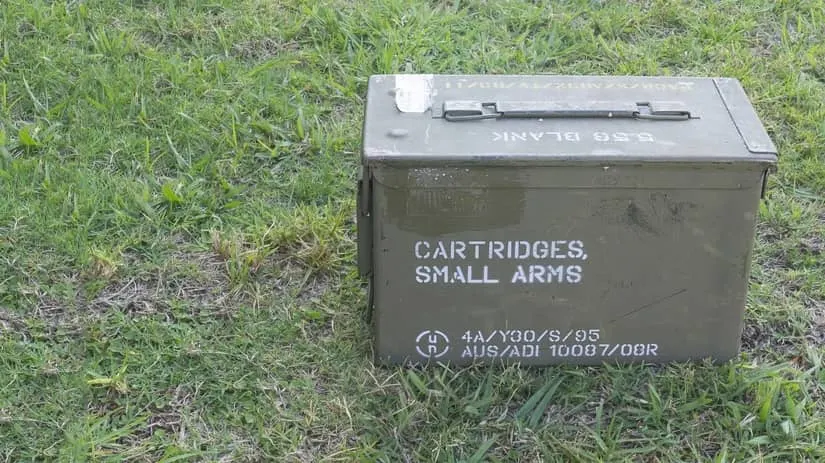
Defensive Tools
Security is another area that can cover a broad spectrum of survival shelter supplies. Minimally, you will account for personal protection for each resident in your underground bunker supplies.
This should include a sidearm and battle rifle or shotgun and the best ammo storage containers for long-term bullet storage.
You may also wish to include specialty arms and munitions. Don’t neglect a precision rifle or Short Barrel Rifle (SBR) as they each fill specific defensive niches.
Not every situation requires a lethal solution so you must also stock non-lethal defenses. These include rubber buckshot for a shotgun, tasers, and pepper spray.
Area Security
Security also includes the ability to monitor your immediate and extended surroundings. Security is all about defensive rings around your bunker. The wider you push your abilities the monitor the more time you have to prepare for a potential conflict.
A Dakota MURS system can monitor large sections of your property from a central location.
Video surveillance is currently cost-effective. As a last resort, you can set up a listening/observation post with hardwired communication (field telephone).
Again, your goal should be to extend your ability to observe your environment as far as possible.
- Offers a license-free monitoring service - This...
- Helps monitor your perimeter - The MURS Alert...
- Provides 2-way conversation - The M538-BS Base...
#8. Communications & Community
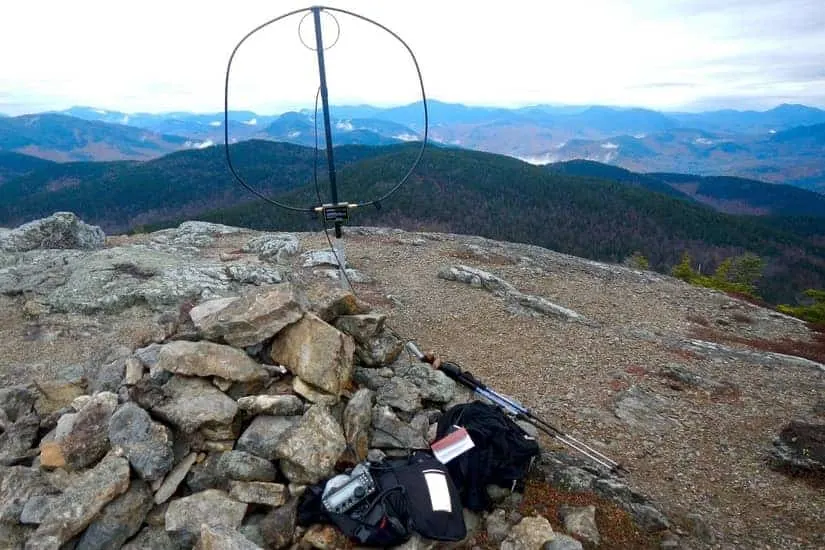
Following directly on security is communications and community. Bunker living will be a drastic change from our current connected lifestyle.
For some, this change will be shocking to the core – especially for today’s teenagers. Don’t underestimate the ability to communicate with others when SHTF. This applies to wellness checks, socialization, and information gathering.
If you know of others in the immediate area you may be able to get by with a 2m or 75cm Ham radio. Otherwise, you will need an HF rig with both an antenna suited for local communications (NVIS) and global communications.
Secondly, I highly recommend a computer that allows for the use of digital modes (including CW). Digital allows for information exchange in a manner that can be more robust than voice exchanges.
Digital modes such as Contestia 4/250 are designed for weak signals and noisy environments. Some modes also allow for the exchange of imagery. While not exactly fast, a picture is still worth 1,000 words.
While you can exchange valuable information, communication extends your community. Remember, without communication friends will only be someone you used to know. Do not underestimate the ability to talk to someone else during a crisis.
#9. Entertainment
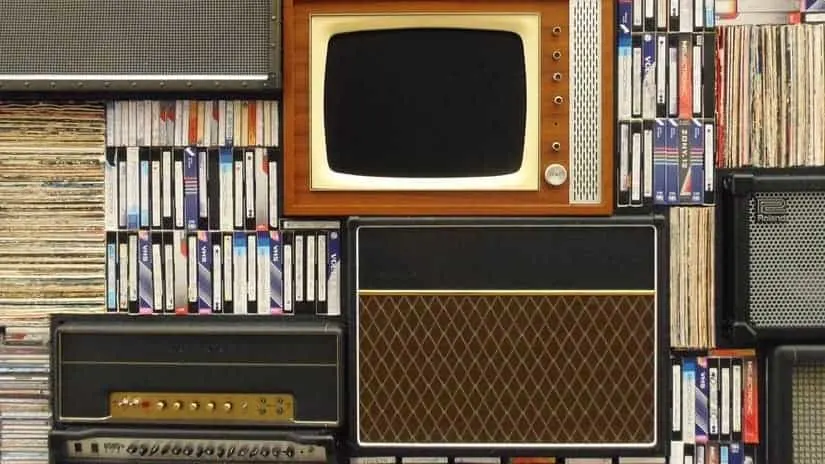
Our final stockpiling topic is entertainment. Assuming you are preparing for the worst you will be spending a significant amount of time in your bunker.
This can result in a great deal of psychological stress for you and your entire family. “Idle hands are the Devil’s workshop”. So, plan to keep him at arm’s distance.
Cards and board games have brought families together for generations. Books can occupy and stimulate the mind.
Whether you are a fan of fiction for the escape or nonfiction for learning you can pass hours in a book.
Stock up your music library, but don’t forget to indulge the tastes of each member of your family. Depending on your space requirements, musical instruments will go a long way to provide entertainment and relieve stress.
Finally, a large stockpile of movies can fill idle hours with ease. Given this digital age, you can store an incredible amount of digital entertainment in a small space.
Even (am I really saying this?) a gaming console can provide a much-needed break from the monotony of life underground.
Final Word on Bunker Supplies
No matter your reason for building an underground bunker you should not take it lightly. Nor should you take the bunker design and size for granted. One misstep and you may fail at the goal of providing a safe and secure refuge for those you love.
Choose the items you stock up on with just as much care as the other steps in the process and you will not let your family down.
Frequently Asked Questions
What are the main water supplies I will need to stock up on?
Stored water, water filters, and water pump supplies (spare parts) should all be stockpiled.
What are the main food supplies I will need to stock up on?
Semi-perishable (canned), bulk (rice and beans), and meals (freeze-dried meals and components) should all be stockpiled.
What are the main medical and sanitation supplies I will need to stock up on?
Medicines, dressings, trauma supplies and toilet paper, cleaning supplies should all be stockpiled.
What are the main entertainment supplies I will need to stock up on?
Books, DVDs, and Games should be stockpiled.
What are the main clothing supplies I will need to stock up on?
Multiple changes of clothes with double the amount of underwear, socks, etc. due to the reduced capability to wash clothes as often.
What are the main consumables I should stock up on?
Toilet paper, dishes, light bulbs, water and air filters, personal and facility cleaning supplies should be stockpiled.
What are the main mechanical (spare parts) should I stock up on?
Parts for all water, electrical, sanitation, and HVAC systems up to and including spare main components (e.g. water pumps, generators) should be stockpiled.

Resources:
Other Bunker Articles You Will Love:
Underground Bunkers: the Ultimate Guide
The definitive guide to underground bunkers. All your ‘why’, ‘what’, ‘where’, ‘how’ and ‘what to stock it with’ questions answered.
10 Reasons to Build an Underground Bunker
There are many reasons to build an underground bunker given the threats we face in this modern age. Here are 10 reasons why you should consider building one.
Underground Bunker Prices: How Much Do They Really Cost?
The full story on underground bunker prices. Whether you go the DIY or commercial route we'll cover it all, from air filtration to waste management.
DIY Underground Bunker Plans: If You’re Going To Bug In, Do It Right
Is bugging out not a viable solution for your family? Perhaps you should consider these DIY underground bunker plans to help alleviate the cost.
Underground Bunker Design and Size Considerations
An array of questions and concerns to consider on the topic of bunker design, which is one of your best hedges against serious disaster.











